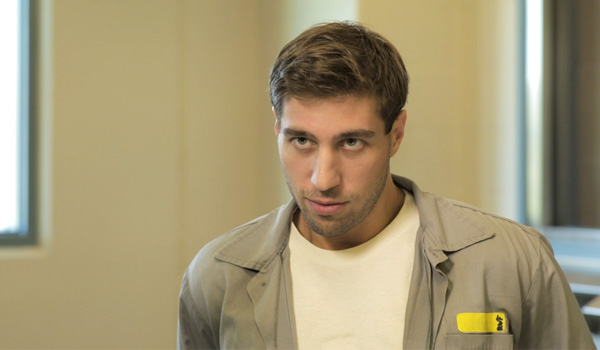For many documentaries, a strong subject matter is the main draw. Granted, directorial choices are crucial, but compelling interviewees or a topic that resonates with the public can help a film truly soar. The best of these films do just that, from a film about a father working to exonerate his son to a work about jihadists in Pakistan.
Serial fans in withdrawal will eagerly take in Andrew Jenks’s dream/killer, the story of Ryan Ferguson, who was wrongly convicted of robbing and killing a journalist. The case bears many similarities to those of Serial’s Adnan Syed. Like Syed, Ryan was only 17 when the murder he was convicted of committing took place, and there was no physical evidence linking either teen to the crime; it was testimony from a second, vaguely sketchy individual that sealed the deal. And both Syed and Ryan received mediocre defenses from attorneys who were supposedly highly regarded in the field. While the allure of the often maddeningly coy Serial was the “did he, or didn’t he?” debates that it spawned, dream/killer takes a definite stand, presenting a more straightforward indictment of our justice system.
With his boyish good looks and admirable lack of bitterness, Ryan is a likable figure, but it’s his father, Bill, who made it his mission to overturn his son’s verdict, who’s the heart of the film. He tracked down hard-to-reach witnesses and revisited the scene of the crime day after day until he finally was able to garner support for his son’s plight. Frank and plainspoken, he’s a homespun but heroic everyman, and Jenks wisely made the choice to focus on him. At 107 minutes, dream/killer is one of the longer documentaries this year at Tribeca, but it races by. Jenks holds viewers in his thrall and keeps them there long after the credits roll.
Anyone who’s been paying attention to pop culture in the last two decades is probably aware of the prevalence of prescription drugs (conspicuous pill poppers have included everyone from Michael Jackson to Nurse Jackie to Gregory House), as well as the potential for abuse, and Chris Bell’s Prescription Thugs is an intriguing take on the subject. Granted, unless they’re incredibly sheltered or misinformed, most viewers won’t emerge from theaters with their worldviews radically changed. Among the so-called shocking truths are that Big Pharma is motivated by profits, not concern for the public’s health, and that drugs such as Oxycontin, Codeine, morphine, and Vicodin derive from the same source as heroin, the opium plant.
However, Bell is aware that this is a well-trod topic, and he personalizes his film by turning the lens on himself and his family, interviewing his (now deceased) older brother, a wrestler who struggled with addiction for years. Like Morgan Spurlock and Michael Moore, Bell inserts himself prominently into his work, minimizing the distance between himself and his subject.
When it comes to editing, too, Bell’s clearly taken a page from Moore’s playbook, inserting pop culture references (think Breaking Bad and Scarface) and vintage PSAs for a hip and savvy flavor. Though the shtick wears thin, there are some authentic moments here, such as when Bell makes a visit to his congressman in an attempt to lobby for laws restricting prescription drugs. (Though the politician is quite sympathetic, Bell comes off as refreshingly idealistic, even evoking Moore’s attempts to visit GM CEO Roger Moore in Roger and Me.) While there are a few missteps here (including using a PhD in homeopathy as a talking head), it’s a solid film with a personal perspective.
Many of the filmmakers here sought intriguing premises for their works, but not all of the subjects here were quite appropriate for full-length films. Havana Motor Club, the story of Cuban drag racers attempting to hold a legal race, certainly sounds promising, but it might have worked better as a short. Viewers learn that drag racing used to be legal in Cuba but was banned shortly following the 1959 Revolution, as it was considered an elitist pastime. Havana follows Rey, a mechanic whose whole family is devoted to racing; Rey’s rival, the handsome Carlos; Jote, whose claim to fame is that his vehicle boasts a motor taken from a boat; and Piti, a determined cancer survivor. The film focuses on these racers and their struggles to hold a legal race, while also putting the film into a larger sociohistorical perspective. Though filmmaker Bent-Jorgen Permlutt tries valiantly to demonstrate that the sport has a larger cultural significance, the races themselves lack drama, and though the racers themselves are by turns joyful, disappointed, even angered, audiences may be left cold.
Similarly, Jeanie Finlay’s Orion, the Man Who Would Be King sounds mysterious in all the best ways—after all, its central figure is an Elvis impersonator who sported a Kato-esque mask. Southern-born Jimmy Ellis was told growing up that he sounded just like Elvis, but the pursuit of celebrity proved frustratingly elusive. While Ellis desperately wanted to be a singer and performer in his own right, his decision to sign with Sun Records in the 1970s kept him stuck in the King’s shadow. Sun’s owner Shelby Singleton packaged and sold Ellis as Orion, giving him strict orders to wear his mask on stage and in public at all times to promote the myth that Presley faked his death and reemerged as Orion.
Quite a few documentaries have made waves by presenting the untold stories of overlooked but talented musicians (most notably, the Oscar-winning 20 Feet from Stardom, as well as The Wrecking Crew), emphasizing the ephemeral and arbitrary nature of fame. But what sets Ellis apart from every other wannabe crooner who simply didn’t make it? It isn’t clear that Finlay knows, and though audiences will sympathize, his story isn’t made all that compelling.
Viewers left confused and bewildered by the siege of terrorist attacks making headlines will appreciate Among the Believers, which centers on Pakistani cleric Maulana Aziz, an ISIS and Taliban supporter who runs the Red Mosque, located in Islamabad, and whose madrassas turn baby-faced boys into suicide bombers. Remarkably, filmmakers Hemal Trivedi and Mohammed Ali Naqvi get up close and personal with Aziz, interviewing the cleric himself, portraying daily life at one of the madrassas, and speaking to students. Though the directors don’t shy away from describing the pain wrought by the Red Mosque—for instance, in Peshawar in 2014, 141 people were massacred, most of whom were young children—they also provide a look at Pakistanis fighting to pull their country back from the disturbing path it’s gone down, such as nuclear physicist and educational activist Pervez Hoodbhoy, who calls for Aziz’s arrest and speaks out on the need to put an end to the madrassas.
Naqvi provides sociohistorical context for what may seem like senseless violence and chaos to many viewers, explaining how the U.S. decision to funnel weapons and money to Afghan freedom fighters to ensure a victory during the Afghan-Soviet War resulted in the development of what would become the Taliban and madrassas that churned out terrorists. Aziz explains that he’s merely filling a vacuum for the young people who attend his schools, and several of them describe how they have food to eat and somewhere to sleep at last.
The film is well paced and informative; viewers with a shaky grip on current events will emerge with a stronger understanding of the situation. More than that, Trivedi and Naqvi illustrate that though what Americans hear about Pakistan from the news is dire, it’s what Americans don’t hear about—the efforts of moderate Muslims struggling to take back their country—that’s just as relevant to understanding the nation.
Though it’s not a documentary, Sunrise is a strong, memorable film. The film sounds a like a typical thriller or police procedural: a police inspector, Joshi (Adil Hussain), is haunted by the kidnapping of his young daughter years ago but realizes he may be close to finding her when he stumbles upon a strange nightclub where young girls, barely in their teens, if that, dance for money. However, viewers who take the plunge will find themselves in a world that’s less an Indian Cold Case or Law & Order and more David Lynch.
There are eerie sequences where director Partho Sen-Gupta blurs the line between reality and dream—or, more accurately, nightmare. And that’s what makes Sunrise so compelling: it’s never precisely clear what is and isn’t real. There are scenes involving the girls who work at this nightclub and the harsh older woman who pimps them out, which have a realistic, almost gritty flavor. Yet many other moments, especially where Joshi finds himself stalking an unseen shadowy figure, where viewers will wonder what’s what, much like Lynch’s cult classic Mulholland Drive.
As with a dream, what’s most important here are less the events and the plot—they’re nebulous—and more the emotions, the feelings of loss and remorse, of wanting to relive and redo the past, that Sunrise evokes. It’s an odd film but a potent one.

















Leave A Comment